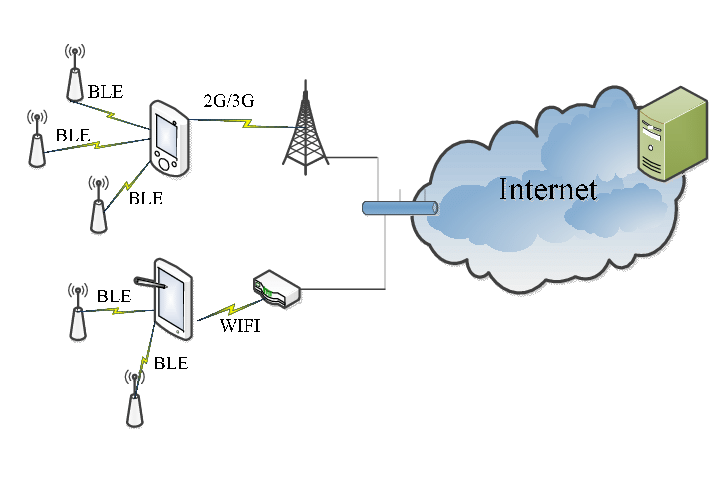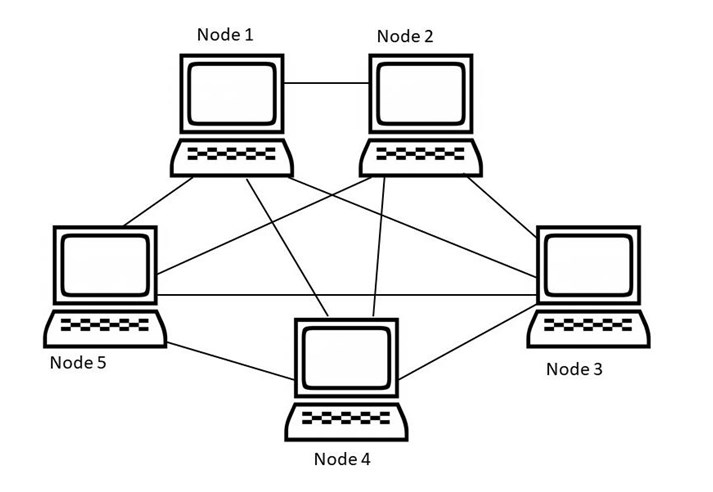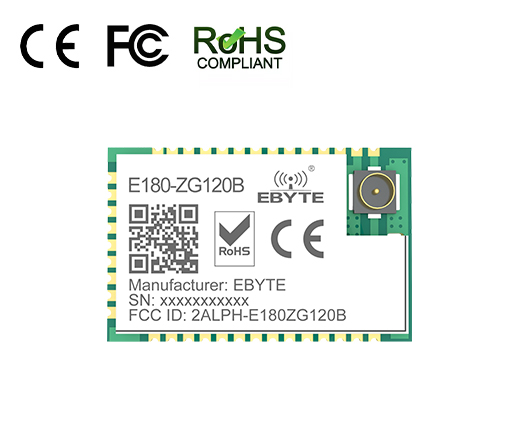

Wireless connectivity in the Internet of Things is key to enabling communication between devices. In urban intelligent construction and intelligence, how do we choose the appropriate IoT wireless network solution? There are many different wireless connection solutions for Internet of Things applications.
Foreword introduction
With the development of Bluetooth mesh in recent years, mesh networks may be more widely used in the next few years, especially in applications where thousands of network nodes must communicate in a wide geographical area, MESH networks It also promotes the development of applications such as intelligent building automation, intelligent energy management applications, large-scale agricultural automation, and industrial automation.
Content Express here:
Definition of star topology and mesh topology
IoT star topology: In IoT star topology, the central node is usually a hub or a cloud platform. IoT devices are connected to a central node through which they communicate with other devices. The central node plays an important role in the Internet of Things, which can collect, process and distribute data from various devices. A star topology is useful for managing and monitoring IoT devices and implementing data analysis and control.
 IoT Mesh Topology: IoT mesh topology is similar to traditional mesh topology. IoT devices can be directly connected to each other to form a complex network structure. This topology is important for high reliability and fault tolerance in IoT applications. If the connection between a certain device is interrupted, the data can be transmitted through other paths to ensure the reliable delivery of data and the continuity of communication.
IoT Mesh Topology: IoT mesh topology is similar to traditional mesh topology. IoT devices can be directly connected to each other to form a complex network structure. This topology is important for high reliability and fault tolerance in IoT applications. If the connection between a certain device is interrupted, the data can be transmitted through other paths to ensure the reliable delivery of data and the continuity of communication.

Mesh Networking: ZigBee mesh and Bluetooth mesh
ZigBee Mesh and Bluetooth Mesh are two commonly used wireless mesh networking protocols. They are both widely used in the Internet of Things for communication and control between devices.
Related article:
ZigBee Mesh (ZigBee mesh network): ZigBee is a low-power, low-speed wireless communication protocol suitable for large-scale Internet of Things applications. ZigBee Mesh employs a mesh network topology in which each device can act as a router, transferring data over multiple hops. ZigBee Mesh has the following characteristics:

Self-organization and self-healing: Each device can automatically form a network and self-heal, forming an adaptive mesh network structure.
Low power consumption: ZigBee uses a low-power communication mode, which is suitable for battery-powered IoT devices.
Highly reliable: Due to the redundant paths of the mesh network, even if a device fails or is disconnected, data can still be transmitted through other paths.
Bluetooth Mesh (Bluetooth Mesh Network): Bluetooth Mesh is an extension of Bluetooth technology for building large-scale wireless mesh networks. Bluetooth Mesh uses a star network as the basic topology, where one device acts as a central node (representing a gateway), and other devices transmit data through multiple hops. Bluetooth Mesh has the following characteristics:
Self-organization and self-healing: Bluetooth Mesh supports automatic networking and self-healing functions. Devices can join or leave the network without affecting the overall connection.
Multi-hop transmission: Bluetooth Mesh allows devices to transmit data through multiple hops to cover a greater range and provide network redundancy.
Low power consumption: Bluetooth Mesh(refer article :BLE5.0 Bluetooth module, master-slave integration, low power consumption!) uses a low-power communication mode, which is suitable for battery-powered IoT devices.
High security: Mesh provides a strong security mechanism, including authentication, encryption and data integrity verification.
Although ZigBee Mesh and Bluetooth Mesh operate in a mesh network, they can also be combined with a star network structure. In practical applications, multiple-star networks can be connected to each other through bridges or gateways to form a larger-scale mesh network. Featuring self-organization, low power consumption, and reliability, they are suitable for various IoT applications such as smart homes, industrial automation, and smart cities, among others. The choice of which protocol to use depends on specific application requirements and system design considerations.
Application of Star Network
A star network is suitable for many different items and devices. Here are some common items and equipment that can be applied to a star network:
PCs and Laptops: PCs and Laptops can be connected to the central node of the star network via Ethernetor Wi-Fi for Internet access and network communication capabilities.
Home smart devices: The star network can connect various smart home devices, such as smart TVs, smart speakers, smart lamps, smart sockets, etc. These devices can communicate and control through the central node.
Office equipment: Printers, scanners, copiers and other equipment in the office can be connected to a star network for easy sharing and management.
Security and monitoring equipment: security cameras, access control systems, intrusion alarms and other security and monitoring equipment can be connected to the central node through a star network to achieve real-time monitoring and remote access.
Sensors and monitoring equipment: Various sensors and monitoring equipment, such as temperature sensors, humidity sensors, gas sensors, etc., can be connected to a star network to transmit data to a central node for processing and analysis.
Medical equipment: Medical equipment such as heart rate monitors, blood pressure monitors, blood glucose meters, etc. can be connected to the central node through a star network to facilitate data recording and remote monitoring.
Industrial automation equipment: In an industrial environment, a star network can be used to connect and control various automation equipment, such as PLCs (programmable logic controllers), sensors, actuators, etc.
These are just some examples, and star networks can be applied to a variety of different items and devices. The key is to connect these items and devices to the central node of the star network for data transmission, remote control and centralized management
Pros and cons of Star Network topology
A star network consists of a central node to which all other nodes are connected. Nodes communicate with each other through gateways.
A common Wi-Fi network is a familiar star topology, with devices such as phones, tablets, and printers all connected to a single wireless access point. This wireless access point acts both as a router in the local network and as a gateway to the Internet.
Since the wireless access point is responsible for distributing data packets along the star network, messages can be transmitted through data transmission between a node and wireless access point or between two nodes through a central node, we can form a fast network.
Another advantage is that IoT networks based on star topology can easily identify and isolate faulty nodes, since each node has its own independent connection to the hub. However, since the data packets must pass through the central node, if the central node fails, the entire network will cease to exist. Another major limitation of the wireless star network topology is that all nodes should be within the radio coverage of the central node, which limits the size of the network capacity. In addition, the star network does not have the flexibility to bypass obstacles or environments with high interference, so the star network is more suitable for wireless networks with smaller network capacity.
Pros and cons of Mesh network topology
Whereas a mesh network usually contains multiple routing paths between every two nodes, which has a more flexible layout and increases our network coverage. In a mesh network, nodes can act as routers, relaying data through the network. Therefore, there are several different data transmission paths between every two nodes, and this multi-path communication improves network flexibility; if one path is disconnected, we can transmit data through another path. The downside is that the multi-hop nature of the communication increases the delay in packet transmission
 Small Size Multifunctional Zigbee Wireless Amplifier Module Zigbee 3.0 for Smart Home ETC
Small Size Multifunctional Zigbee Wireless Amplifier Module Zigbee 3.0 for Smart Home ETC
[IC]:EFR32
[Frequency]:2405~2480MHz
[Power]:18~20dBm
[Distance]:1.3km
[Size]:11.5*18mm
[Weight]:0.9±0.1g
[Introduction]:E180-ZG120B is a small, low-power, high-reliability, 2.4GHz ZIGBEE module based on Silicon Labs EFR32MG1B. The chip comes with high-performance 32-bit ARM Cortex. -M4 core, integrated internal power amplifier, transmit power up to 20dBm.
- Application scenarios of wireless data transmission stations in the Internet of Things
- Get to know the SPI, SOC, and UART modules
- Why LoRa spread spectrum technology is so frequently applied to wireless communication
- Introducing 11 Common IoT Wireless Communication Protocols: How to Choose the Best Protocol
- 4 Technologies Learn How LPWAN Enables Communication Between IoT Devices
- How USB2.0 device establishes connection with the host
- FREE TRIAL AT EBYTE ,HURRY UP!









